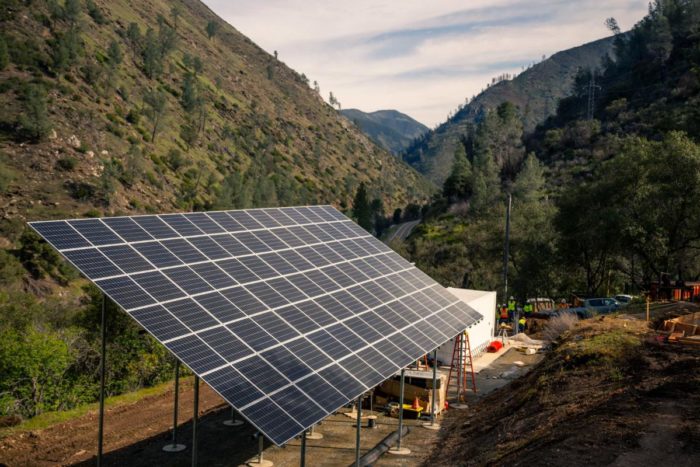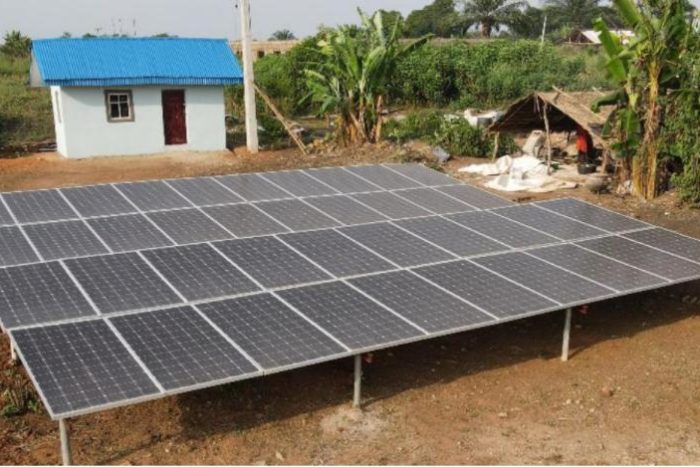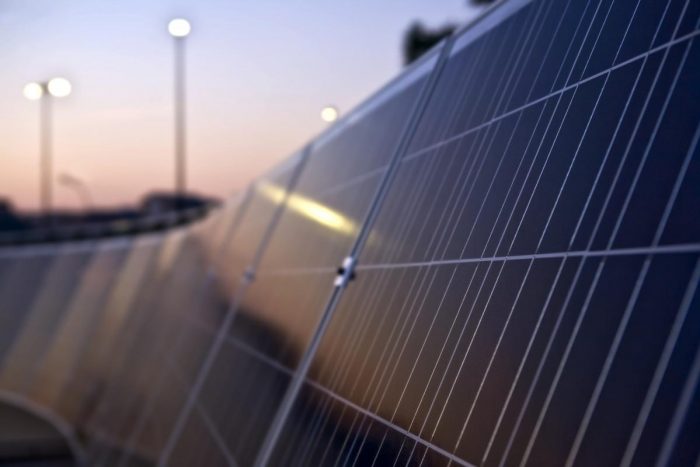HOMER Energy by UL joined more than a dozen companies as a founding member of Think Microgrid, a new coalition formed to advance state and federal policy in the U.S. and lead the way to improve electric reliability with microgrids.
Top Stories
Proposed Federal MICROGRID Act (Em)powers Local Governments, Nonprofits
Congressman Panetta’s bill — the Making Imperiled Communities Resistant to Outages with Generation that is Resilient, Islandable, and Distributed (MICROGRID) Act – would provide an incentive toward installing and deploying microgrids to provide backup power during emergencies. The need for these microgrids is clear, and through this legislation, the federal government would enable communities and to take climate-related action.
PG&E and BoxPower Mitigate Wildfire Risk with Remote Hybrid Power Systems
Rather than rebuild distribution lines damaged by fire, PG&E is working with BoxPower to install a renewables-based microgrid to provide clean, resilient power for customers in Briceburg, California. The solar + storage system is the first of 20 proposed for development through PG&E’s new Remote Grid Initiative.
Electric Cooking Can Improve Lives, Reduce Emissions, and Boost Solar-Powered Microgrids
A research project in rural Haiti demonstrates the effectiveness of electric cooking technologies powered by solar microgrids to improve the quality of life for community members while generating new revenue streams and opportunities for energy access providers.
Nigerian Minigrid Reveals Transformative Power of Access to Clean Energy
When Ashipa Electric installed a solar + storage-based mini-grid in an agrarian community in Nigeria, team leaders expected the system to lower power costs and reduce carbon emissions. But by offering residents access to clean, cost-effective energy, the hybrid system also revitalized the economy, elevated quality of life, and produced environmental benefits beyond all expectations.
An Industrial Microgrid in Costa Rica Offers Cost-Reduction and a Path to Carbon-Neutrality
A hybrid energy system at a manufacturing facility not only helps reduce energy costs and emissions, but also has far-reaching carbon reduction benefits, and positions Costa Rica as a leader in the fight against climate change.
Results-Based Financing Models Provide Path Forward for Mini-Grids in Africa
Mini-grids could provide energy access to the approximately 580 million people without power in Africa while fulfilling decarbonization and climate goals. However, financing these projects often proves challenging. In order to secure funding, project developers are increasingly looking to results-based models.
The Need for Operational Resilience Drives Microgrid Innovation
A Colorado car dealership experienced several prolonged power outages during business hours each year. The lost business was consequential, so it installed an innovative grid-tied, solar + storage microgrid that today provides a myriad of benefits.
Ripple Effect: An Educational Microgrid in Indonesia With Far-Reaching Benefits
Access to energy is a challenge for inhabitants of remote islands in Maluku Province, Indonesia. But a new campus mini-grid lab will soon offer engineering students practical experience that could produce a groundswell of interest in renewable energy and provide more villages with power.
Retail Power: Solar-Powered Shopping Centers Provide Cost Savings and Clean Energy
A rising number of shopping mall owners in Australia are turning the rooftops of commercial spaces into power plants with on-site solar arrays and energy storage. These hybrid systems allow owners to provide tenants with cheaper, cleaner power.
Building Green: Powering Construction Sites with Renewable Energy
Construction sites, known for their high energy requirements, are major producers of greenhouse gas emissions. Faced with a surge in urban construction and increasingly stringent carbon reduction regulations worldwide, builders are turning to renewables-based hybrid systems to power their sites.
A Positive Charge for Energy Storage
Today energy storage technology is recognized as an integral part of the transition to clean energy. In this article, we explore battery technology and safety advancements, as well as the market’s rapid growth and its impact on microgrids and hybrid power systems.
Top 10 Microgrid News Stories of 2020
As 2020 comes to a close, we’ve curated a collection of the most interesting and informative articles published on Microgrid News this year to inform your design projects and inspire your vision for 2021.
Feasibility Studies Instrumental in Success of 5 Municipal Microgrid Projects in California
The value of proving economic and technical viability was demonstrated by the City of Camarillo recently, when, based on a positive feasibility study, council members voted unanimously to move forward with the design of hybrid solar microgrids at five of its facilities.
Exploring Efficiencies at the Water-Energy Nexus: Rottnest Island’s Innovative Hybrid Energy System
Faced with the challenge of utilizing hybrid renewable energy to produce enough electricity and potable water for the island’s large annual influx of visitors, the Rottnest Island Authority found a path to success through an innovative approach to demand management at the water-energy nexus.
Microgrid Funding Opportunities Arise as Maryland Emerges as Key State for Development of Hybrid Power
Funding opportunities from the Maryland Energy Administration’s Resilient Maryland grant program have jumpstarted projects throughout the state. As a result, Maryland has emerged as a key state for microgrid project development. The 2021 grant deadline is approaching.
Renewable Energy Powers an Arctic Village: Ancient Traditions and Clean Technology
Developing a microgrid in the Yukon’s extreme North is a challenge of epic proportions. A landmark power purchase agreement, extraordinary system engineering, and a unique pitched panel design will allow the village of Old Crow to reduce its diesel consumption by over 50,000 gallons per year.
Looking to the Past to Predict the Future of Microgrid Markets
By studying historic drivers and evaluating current market indicators, Wood Mackenzie researcher Isaac Maze-Rothstein has gathered key insights related to microgrid markets in both the US and Kenya. He and colleague Benjamin Attia have mapped out an overview of what the future may look like for these markets. They will present their findings at the 8th annual HOMER International Microgrid Conference on October 12.
Groundbreaking FERC Order 2222 Opens Energy Markets to DERs
The Federal Energy Regulatory Commission (FERC) recently approved a landmark ruling that enables distributed energy resource aggregators to compete in regional wholesale energy markets. The ruling is expected to create new revenue opportunities for owners of solar, batteries, EVs, and other DERs.
Top 5 Reasons to Attend HIMC 2020 and Join the Microgrid Revolution
The global microgrid market is experiencing unprecedented growth. Learn how you can capitalize on this expansion and use it to propel your business forward at the 8th annual HOMER International Microgrid Conference. The event is 100% virtual and free to attend.
Foundational Support: Vallecito Energy Storage Resilience Project Lays the Groundwork for a Larger Renewables-Based System
An exciting energy storage installation in the Goleta Load Pocket, a highly vulnerable 70-mile transmission area in Southern California, will provide resilience in the form of 40 MWh of utility-scale energy storage. The Vallecito Energy Storage Resilience project will not only provide an energy storage foundation for a future community microgrid, but it lays the groundwork for a more resilient energy network in a region hard-hit by natural disasters.
Mind the (Charging) Gap: Electric truck fleets are set to expand exponentially. But not without robust charging infrastructure.
Analysts forecast a dramatic rise in the number of e-trucks on the road by 2025, which can significantly reduce greenhouse gas emissions and support air quality goals. But addressing the question of how to meet the high energy demand and infrastructure needs of e-trucking fleets is critical. On-site, renewable generation offers a solution.
How to Adapt Microgrids to New Constraints Brought on by the Novel Coronavirus
The challenges created by the coronavirus pandemic make it more critical than ever to ensure that businesses have abundant, continuous power. Project developers can prepare businesses by equipping them with smart energy management systems that allow for remote commissioning, autonomous control, and reliable off-site monitoring and data logging.
Extending Battery Life with Control Strategies: An Interview with Jonathan Schulte
Jonathan Schulte explores the ways in which microgrid control methods informed by forecast-based algorithms can extend battery life and decrease operational costs. He will present his research at the 8th annual HOMER International Microgrid Conference in October. Schulte and his team have developed a method for reducing the average state of charge of lithium-based battery systems and decreasing the time the battery spends in a fully charged state—both of which lead to longer battery lifetimes without impacting the system performance.
Flow Batteries: Technology Synergies Will Provide Grid Stabilization
Flow batteries are considered excellent choice for large-scale energy storage projects for a number of reasons, but primarily because they can cycle for multiple short periods daily, for about 30 years while maintaining an even performance. The Energy Superhub Oxford will install the UK’s first transmission-connected battery, a lithium-ion/vanadium flow battery, sited at National Grid’s Cowley Substation.
Mini-grid Remote Monitoring and Control Delivers Cost-Saving Improvements in O&M
Remote monitoring and control systems can offer cost savings for the operation and maintenance of mini-grids. Equatorial Power is developing a mini-grid that will power a new industrial park in addition to powering the communities on the Ugandan island of Lolwe in Lake Victoria.
Move Over Truck Stops: “Convenience” EV Charging Depots Will Deliver Electricity and Food — Powering Cars and People at the Same Time
Rapid growth of the electric vehicle market means that EV charging infrastructure will have to grow to meet passenger needs. One California company – ChargeNet – is preparing for the future with a new kind of convenience stop that combines charging and restaurants.
Ace Natural, New York: Organic Food Wholesaler Builds Microgrid to Boost Resilience and Cut Utility Bills
An organic food distributor in the metro New York area recently installed a microgrid – designed by HOMER Grid – to improve their bottom line along with their resiliency. Ace Natural is saving more than half their utility costs by using renewable energy, while batteries and a generator powered by biodiesel ensure continuous operations if there’s a power outage:
How Distributed Energy Can Help Meet New Infrastructure Demands for Electric Vehicle Charging
The rapid expansion of the electric vehicle market is going to create two challenges for society: first, electrified transportation is going to increase our demand for electricity; second; in order to serve new EV owners, we will have to make rapid upgrades to our EV charging infrastructure. How will the transition to electrified transportation affect consumers, utilities and other stakeholders? We explore that question in light of the new HOMER Grid EV charging station design tool:
Electric Pressure Cookers and Microgrids Provide Hope in Solving the Intractable Global Problem of Biomass Cooking
Indoor air pollution, mostly caused by cooking with wood and charcoal, causes millions of deaths each year in developing countries, mostly to women. Biomass cooking also depletes forests and adds to global warming. Now the combination of high efficiency electric pressure cookers (EPCs) powered by renewable energy mini-grids, are being tested in East Africa. The hope is that electric cooking can save lives as well as ecosystems:






























